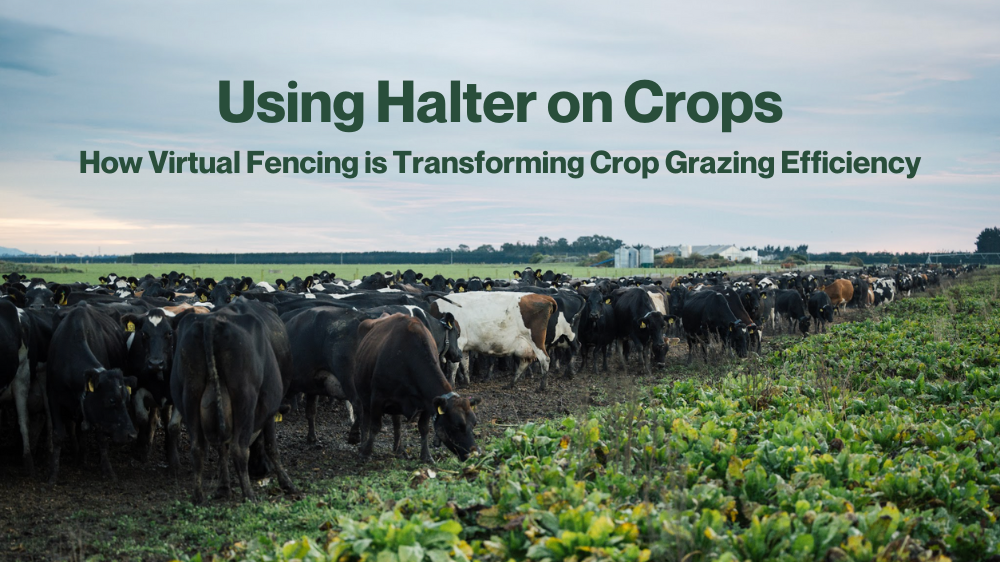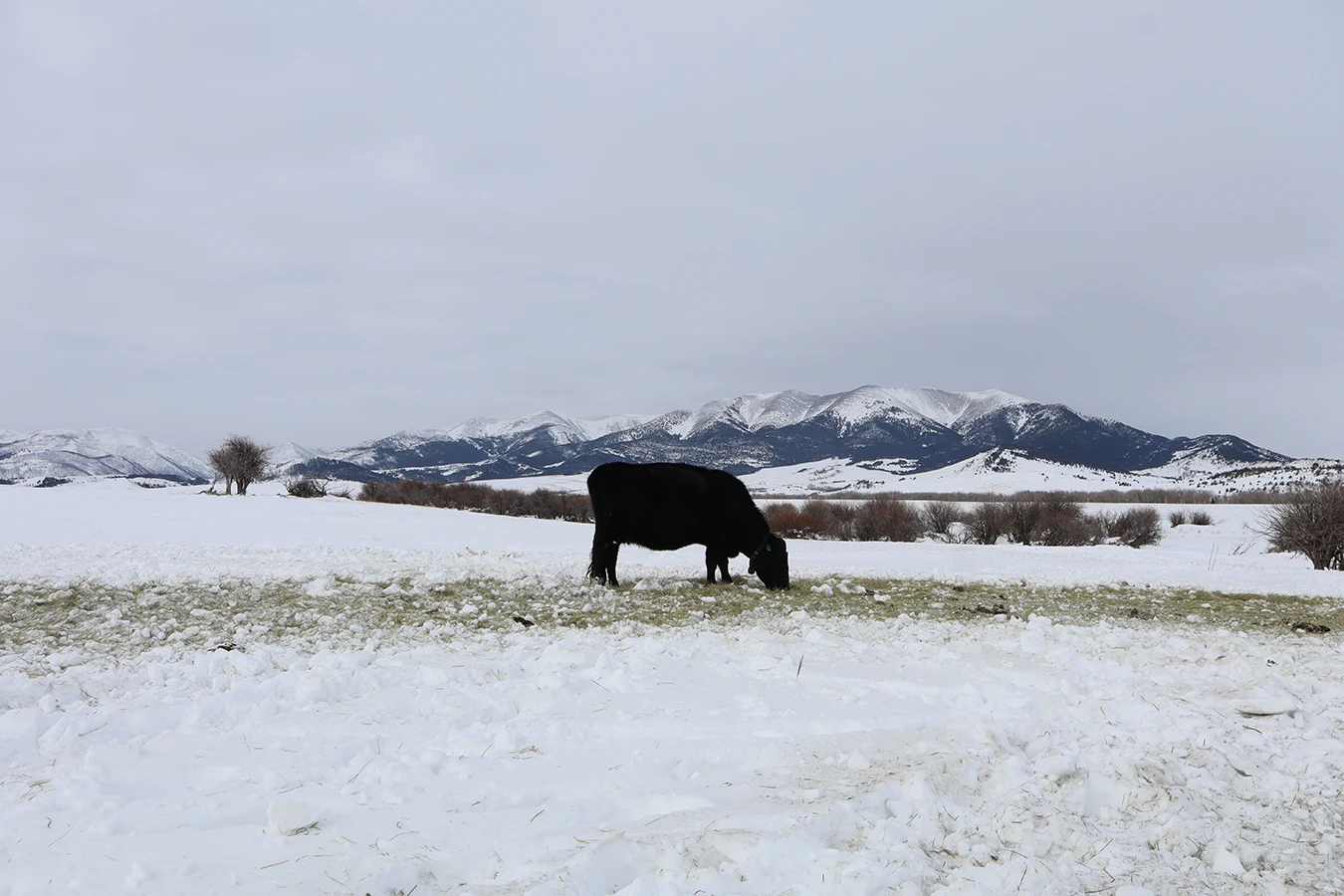From Escape Rooms to Agritech: Meet Dylan, Software Engineer at Halter

So - tell us about yourself!
Hey, I’m Dylan. I’m a Software Engineer at Halter. I joined at the beginning of 2025 as part of the Pasture team, where I help deliver accurate, pasture-based, AI-driven insights to farms from Taranaki to Texas.
My journey through engineering hasn’t been straightforward, but it’s always been interesting. I studied Mechatronics at The University of Auckland, where software, sensors and machines interact with the real world. That space where things get unpredictable is where I’ve always had the most fun (and unsurprisingly, learned the most)!
Every job I’ve had since has followed that pattern: difficult problems and an odd enjoyment of being thrown into the deep end. From wiring escape room puzzles with magnets and microcontrollers to building software for AI-powered shopping carts, I’ve found joy in tackling tough problems and learning as I go.
Halter fits that same mold. The tech is complex, the environment dynamic, and the work has real impact. I get to build things that are far from simple, but very satisfying to complete.
Tell us about your background & career journey so far
Let’s rewind a bit. Why tech? I’ve always been fascinated by how things work. But what really pulled me in was the creative side - the ability to mix logic with experimentation. I love that you can take a messy, unpredictable problem and, through code, hardware, and a bit of brain power, turn it into something functional.
That blend of structure and imagination led me to study mechatronics. I wanted to be in a field where I could bring ideas to life, or at least know where to start. That journey pulled me into the world of software, especially projects that combined sensors, actuators, and code.
My entry into tech was at an escape room company, where I worked as a Puzzle Master (still the best job title I’ve ever had). I built puzzles using Arduinos and Raspberry Pis — wiring magnets, writing scripts, and fixing bugs. It was chaotic and low-budget, and it taught me a lot about thinking on my feet and building things that people would actually interact with. It was my first taster of what it feels like to bring software into the physical world.
After uni, I joined a fast-paced startup building smart AI-powered shopping carts. I worked mainly in embedded C++, developing tools to surface embedded data, and run AI models on edge devices. The pace meant ideas moved quickly - it was problem to prototype in days, which made it a fun place to experiment, learn, and build systems that had to work reliably in the real world.
By then, I knew I wanted to keep working on real-world problems: the kind that live outside the lab, move fast, and matter to people. That’s what led me to Halter.
What’s your current role & what are you responsible for?
I work as a Software Engineer on the Pasture team, where we focus on predicting and modelling pasture growth on farms (aka, how much we think the grass will grow). My main focus is Halter’s predictive pasture system - a multimodal pipeline that blends weather data with satellite imagery to estimate how much pasture is growing across a farm and within each paddock. We combine inputs like temperature, rainfall, and solar radiation with visual signals from satellites to make high-resolution predictions. Farmers use these predictions to understand what, where and why the grass is growing. My work sits somewhere between infrastructure and machine learning experimentation, and always circles back to one core question: how do we model what’s growing in a paddock, and why?
Most days kick off with a quick team meeting and a catch-up coffee. From there, I’ll usually dive straight into writing Python - testing new features in our predictive model pipeline or debugging weird edge cases. Lunch is usually with the team, often with a walk around the block with some kind of tech tangent discussion.
Afternoons are usually my most productive time - with morning meetings done, coffee in hand, and an NBA game quietly playing on my phone, I can get into a solid stretch of focused work. That might mean writing Python, reviewing PRs, or pairing on data investigations or infrastructure changes. Sometimes I’m deep in code; other times I’m spinning around in my chair to spark a quick discussion or sanity check an idea. I love how easily we shift between individual focus and collaborative problem-solving - and how fast we can turn those conversations into working solutions. Being an office-first company means we can solve problems a lot more quickly than trying to all jump on a Zoom to discuss - I just turn around and ask the team.
One project I’ve taken on is rebuilding our internal visualisation tool to better explore and understand the data flowing through our predictive pasture system. The previous tool was painfully slow - repetitive queries made rapid exploration frustrating and inefficient. Wanting something faster and more flexible for the team, I set out to build a custom web app tailored to our workflow. It directly queries and caches fleet-wide data, only loading large datasets when needed. It includes a map-based view to visualise satellite imagery, farm layout, paddock-level metrics, and model predictions, all in one fast, interactive dashboard. It’s now core to how we debug edge cases, monitor system performance, and investigate production behaviour. For a system as complex and multi-modal as our predictive system, having a responsive, engineer-driven tool to visualise what’s happening has made a huge difference in how we work.
What makes this work meaningful is that it’s not just interesting - it’s actually useful. We’re building tools that people rely on, and that’s what keeps me motivated.
Tell us about your team!
The Pasture team is a tight, high-trust crew. We’re a small group of engineers working on tools to help farmers get the most out of their pasture - from forecasting feed to making sense of what’s happening in each paddock. Everyone’s sharp, driven, and always willing to jump in. When things get intense, you know your team’s right there with you. And we’re not all serious either - there’s plenty of banter, morning coffee runs, Friday drinks, and some great yarns after a busy week.
I work closely with 3 brilliant engineers across machine learning, infra, and data. But the biggest standout at Halter isn’t just the work, it’s the culture. Everyone cares. We work hard, move fast, and leave egos at the door. We play for the front of the jersey, not the back.
Every quarter, we visit farms to connect with the farmers, ranchers and animals we’re building for. Those days are a favourite - they’re grounding and energising. You see the impact of your work, ask questions, get feedback, and walk away with a better product and a deeper sense of purpose.
I didn’t realise how much all of this mattered until I joined. My last team was fun, but culture wasn’t central. At Halter, you feel it immediately. There’s connection, there’s purpose, and the challenge brings people closer.
Do you see many growth and learning opportunities at Halter?
One thing I’m genuinely grateful for at Halter is the pace. Things move fast, and that speed drives real change. Change pushes boundaries, and pushing boundaries means pushing yourself. Growth happens naturally at Halter; there’s always something new to take on. Nearly every day presents a new challenge, and that’s how I know I’m in the right place.
Since joining, I’ve taken on work that’s pushed me to level up. I came in with an embedded C++ background, and quickly found myself learning machine learning workflows, working with cloud-based infrastructure, and building visualisation tooling (mostly in Python). Each shift came with a steep learning curve, and Halter backed me to take it on. There’s a strong culture of trust: if something’s unfamiliar, that’s not a reason to avoid it - it’s a reason to go figure it out.
That said, you’re never on your own. I’m surrounded by brilliant teammates who I can turn to at any point, whether it’s to pair on a tricky problem, walk through a code review, or bounce around a half-formed idea. Feedback is open, support is constant, and everyone’s invested in helping each other grow.
Give us the inside scoop on what you do outside of work…
Outside of work, I’m usually on a golf course and playing/watching basketball - so much so that if I’m working from home, there’s a decent chance I’ll get the ⛳ or 🏀 emoji from the team. (They’re joking… mostly.) I’m working toward a single-digit golf handicap (which is good, especially for me) by the end of the year - it’s a fun challenge, and excellent mental training. I also love movies (sci-fi and fantasy especially), gaming, building PCs, snowboarding in winter, and hunting down new food spots around Auckland with my partner.
And then there’s the hobby I don’t always lead with - Warhammer 40K. Custom-painted miniatures, terrain building, the works. I’ve got a whole garage setup with game tables, resin printers, and an airbrush station - it’s unapologetically deep-dive nerd shit, and I love it. Not everyone gets it, but it's a blast. Like golf, it takes patience, strategy, and way more time (and money…) then I’ll admit.
Can you share some advice to anyone applying to work at Halter?
If you’re hungry for a fast-moving environment with real-world impact, Halter’s the place. The people here love hard problems, high pace, and real growth. You’ll be trusted with meaningful work from day 1, surrounded by people who are genuinely excited to push the boundaries of agri-tech. It’s challenging, intense, and incredibly rewarding. If that sounds like your kind of thing, you’ll feel right at home here.
Hard problems, great people, fun vibes, real impact, and bold innovation - that's what keeps me coming back for more each day.
Related Blog Posts
See all articles
Using Halter on Crops: How Virtual Fencing is Transforming Crop Grazing Efficiency
Discover how Halter’s virtual fencing helps farmers graze crops efficiently, save labour, improve feed utilisation, and protect soil health.
Read more
Get ready for your first mating season with Halter
In this post we run through tips for your first mating season with Halter cow collars.
Read more
How David went from 17% cycling to 83% in-calf at 6 weeks
How David went from 17% cycling to 83% in-calf at 6 weeks and turned his mating season around with Halter.
Read more





